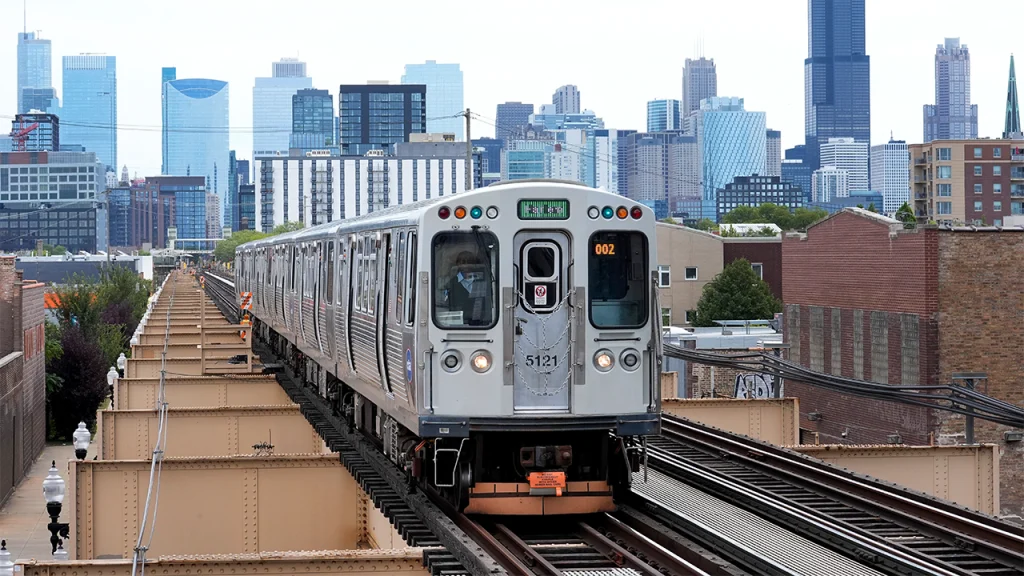Illinois Transit Gun Ban Upheld by Federal Appeals Court: A New Chapter in America’s Gun Rights Debate
In a landmark decision, the Seventh Circuit U.S. Court of Appeals has upheld Illinois’ decade-old ban on carrying firearms on public transportation, overturning a lower court ruling that had previously deemed the restrictions unconstitutional. The ruling, written by Judge Joshua Kolar, represents a significant interpretation of the Second Amendment’s boundaries in modern American society. “The Second Amendment protects an individual’s right to self-defense,” wrote Judge Kolar in the majority opinion. “It does not bar the people’s representatives from enacting laws—consistent with our nation’s historical tradition of regulation—that ensure public transportation systems remain free from accessible firearms.” The decision frames public transit as “sensitive and crowded, confined places” where limitations on firearms have historical precedent, suggesting that such restrictions fall well within the constitutional powers of state legislators to enact measures protecting public safety.
The case traces its origins to 2013, when Illinois—the final state in the nation to permit concealed carry—implemented a series of restrictions including the public transit ban. Four plaintiffs challenged these limitations, arguing that preventing citizens from carrying firearms on buses and trains violated their constitutional rights to self-defense. Last year, the U.S. District Court for the Northern District of Illinois agreed with them, basing its ruling on the Supreme Court’s 2022 Bruen decision, which established a new standard requiring gun regulations to show a “historical tradition of firearm regulation” to be considered constitutional. The district court found no historical analogues justifying restrictions on public transit specifically. However, the appeals court has now reversed this position, determining that the ban “comports with regulatory principles that originated in the Founding era and continue to the present,” despite public transportation as we know it today being quite different from anything the Founding Fathers could have envisioned.
The court’s decision reflects the ongoing tension in American jurisprudence between individual rights and public safety concerns. Judge Kolar, a Biden appointee, framed the question poignantly: “We are asked whether the state may temporarily disarm its citizens as they travel in crowded and confined metal tubes unlike anything the Founders envisioned.” His answer, supported by Reagan-appointed Judge Kenneth Ripple in the majority opinion, was affirmative. The judges determined that while public buses and trains may be modern inventions, the principle of regulating firearms in crowded, confined public spaces has deep historical roots that justify contemporary applications. This interpretation represents a significant approach to applying historical legal traditions to modern contexts, potentially influencing how courts nationwide interpret the Bruen standard in future Second Amendment cases.
The bipartisan nature of the ruling is particularly noteworthy in America’s often polarized gun debate. The majority opinion, authored by a Biden appointee and joined by a Reagan appointee, with a separate concurring opinion from Trump appointee Judge Amy St. Eve, demonstrates that judicial interpretation of the Second Amendment doesn’t always follow predictable political lines. Judge St. Eve raised an interesting jurisdictional question in her concurrence about how to assess redressability “where a plaintiff defines her injury as the inability to engage in protected activity—not the threat of prosecution for doing so—and an unchallenged law also prohibits that precise activity.” This nuanced legal consideration highlights the complexity of Second Amendment litigation beyond the simple question of whether a particular gun restriction should stand or fall.
Illinois’ 2013 concealed carry law, which includes the transit ban along with restrictions in hospitals and other public spaces, came after significant resistance. As the last state to permit concealed carry, Illinois implemented these regulations as compromise measures intended to balance newly expanded gun rights with public safety concerns. The appeals court’s decision to uphold these compromises reflects a judicial recognition that the Second Amendment, like all constitutional rights, operates within a framework of reasonable regulations. The majority opinion emphasizes that their concern was “whether the law aligns with the nation’s tradition,” suggesting a focus on constitutional principles rather than specific historical analogues for modern situations that couldn’t have existed in previous centuries. This approach provides a potential pathway for courts to evaluate gun regulations in contexts the Founding Fathers could never have anticipated.
The case is widely expected to be appealed to the U.S. Supreme Court, setting up a potential landmark decision that could clarify how lower courts should apply the Bruen standard to various gun regulations nationwide. Gun rights groups backing the plaintiffs see this as an opportunity to further expand Second Amendment protections, while supporters of the transit ban view the appeals court ruling as confirmation that public safety measures can coexist with constitutional rights. The Supreme Court’s eventual decision, should they take the case, could have far-reaching implications for gun regulations in various “sensitive places” across the country. As America continues to grapple with balancing individual rights with collective safety, this case represents another chapter in the nation’s ongoing conversation about the proper limits of government authority in regulating firearms—a debate as old as the Republic itself yet continuously evolving to address modern challenges and contexts.


